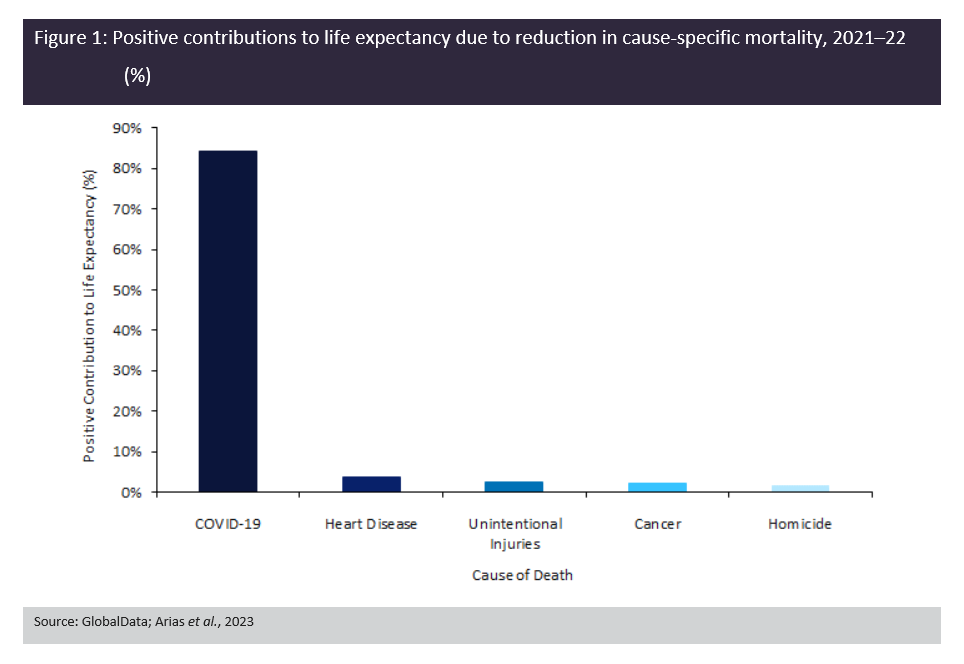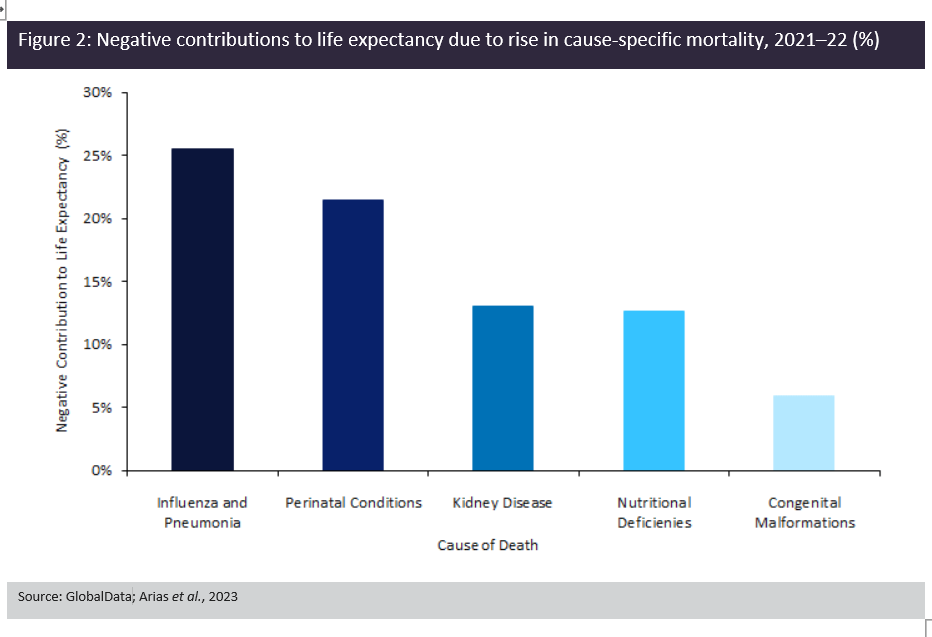For almost half a decade, trends showing a decline in US life expectancy have been the objects of surprise and consternation among public health professionals. However, in their November 2022 publication in the CDC (Centers for Disease Control)’s Vital Statistics Surveillance Report, Arias and colleagues indicate a recent uptick in life expectancy between 2021 and 2022. The 1.1-year rise in US life expectancy, propose the authors, is owing to decreasing mortality rates in the country’s leading causes of death.
The authors consider the shrinking impact of Covid-19 instrumental in this shift, but indicate that influenza, perinatal conditions and kidney conditions played greater contributing roles to US mortality than in previous years. GlobalData’s Covid-19 dashboard estimates a 0.96% mortality rate as of September 2023, showing progress in the reduction of deaths from the virus since the pandemic’s onset. This shift suggests that future Covid-19 response efforts may require fewer resources, raising the potential for greater public health investment in competing causes of mortality.
In their analysis, Arias and colleagues utilised provisional vital statistics collected by the National Center for Health Statistics 2022, which included approximately 99% of US deaths up to July 2023. These statistics were analysed to project overall life expectancy, as well as intergroup differences in at-birth life expectancy based on sex, race and ethnicity.
The report also compared 2022 cause-specific mortality estimates with those of the 2020 to 2021 cycle. Overall life expectancy increased from 76.4 to 77.5 years between 2021 and 2022, with men and women experiencing a 1.3- and 0.9-year increase respectively. This represented the first rise in life expectancy since its sharpest recorded drop in 2019 before undergoing a continued decline.
The optimistic reversal in this trend, propose Arias and colleagues, may be the product of declining rates of the country’s leading causes of mortality. As seen in Figure 1, deaths from Covid-19, heart disease, unintentional injury and cancer experienced a decline from previous years, leading to overall gains in life expectancy. These positive contributions, however, were offset by a rise in influenza, perinatal conditions and kidney disease deaths (Figure 2). Among these causes, the reduction in Covid-19 deaths made a disproportionate contribution to growing life expectancy, accounting for 84.2% of its rise. While the gains in life expectancy have yet to compensate for declines in preceding years, they are suggestive of normalising mortality trends since the onset of the Covid-19 pandemic.
See Also:
The most recent CDC estimates suggest an optimistic sign of an offset in lagging US life expectancy figures. Moreover, shifting contributions of cause-specific mortality to overall life expectancy may offer insights into public health policy agendas ahead. Waning Covid-19 mortality, driven by widespread vaccination and the prevalence of milder variants of the SARS-CoV-2 virus, presents opportunities for public health authorities to refocus health promotion efforts aimed at promoting preventive medicine for historic leading causes of death such as cardiovascular disease and cancer. While Covid-19 will continue to exert an indelible impact on public health practice, the signs of its diminishing contribution to mortality offer promising signs of transition from crisis management to an endemic model of disease.
How well do you really know your competitors?
Access the most comprehensive Company Profiles on the market, powered by GlobalData. Save hours of research. Gain competitive edge.

Thank you!
Your download email will arrive shortly
Not ready to buy yet? Download a free sample
We are confident about the unique quality of our Company Profiles. However, we want you to make the most beneficial decision for your business, so we offer a free sample that you can download by submitting the below form
By GlobalData










